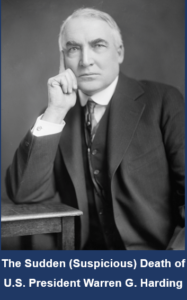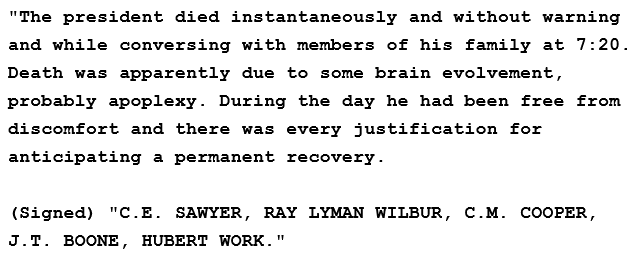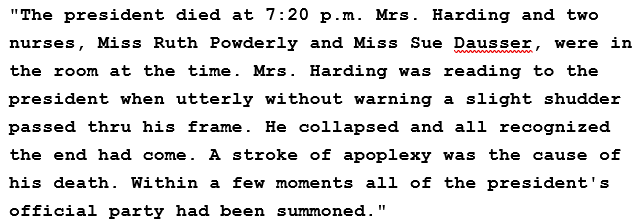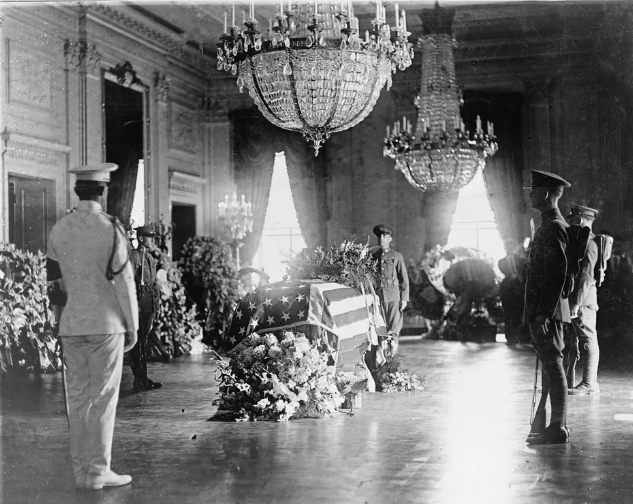 The Global Personal Development Market (Success Industry) is huge. It’s enormous and exponentially growing. Success Inc. has been around a long time, and it’s going to stick with us for a long while yet. From founders like Napoleon Hill (Think & Grow Rich) to furthering followers like Tony Robbins and new agers such as Elizabeth Gilbert, the wealth and happiness business has never been healthier. There really is something to the power of passion, persistence, and perseverance.
The Global Personal Development Market (Success Industry) is huge. It’s enormous and exponentially growing. Success Inc. has been around a long time, and it’s going to stick with us for a long while yet. From founders like Napoleon Hill (Think & Grow Rich) to furthering followers like Tony Robbins and new agers such as Elizabeth Gilbert, the wealth and happiness business has never been healthier. There really is something to the power of passion, persistence, and perseverance.
Thirty-five years ago, I bought into the Napoleon Hill philosophy of personal achievement. I’ve never regretted opening that book, and it’s the foundation of what I’ve become today. But does that mean what works for some must work for you? I’d say it certainly can—provided you adapt the operative mindset and open yourself to the principles of success. No matter your vocation.
In this Dyingwords post (Tagline: Provoking Thoughts in Life, Death, and Writing), we’ll examine the motivational movement. We’ll look at an example of profound success and how they achieved it through helping others. We’ll hear from another high achiever who calls BS on the Self-Help Industry. We’ll chat with an AI specialist about the number one reason behind successful human endeavors. And we’ll look behind the scenes at Dyingwords along with samples of my affirmations and quotes.
Hopefully the takeaways from this piece let you look at human motivation psychology in a positive light and your valuable time spent reading has a productive payback.
I didn’t invent any of this stuff. I’ve just learned to source what I need, absorb it, and discard the waste. My goal in lifelong education is becoming a better writer (and person) in the hope I can help others achieve their own version of success. It’s for that, I’ve spent the time and money buying into the self-improvement scene. Here’s a clip from Grand View Research about the state of the personal development market:
I have a hard time wrapping my head around 43.77 billion USD. Even a harder time with the projected 67.04 billion (based on a 5.5% CAGR) in 2030 which is less than seven years away. Maybe it’s time to get into the biz.
It’s not just self-help books that folks pay hard-earned and scarce money for. The personal development market includes audios, podcasts, online courses, AI generated programs, clubs, cliques, cults, (ever been to an Amway rally?) conventions, coaching, and personal training for passionate people. Here’s another clip of the Global Personal Development Market—a pie chart of the Big-Five focus areas:
Grand View’s report says the self-awareness segment is anticipated to grow the fastest. Their stats indicate a 6.9% CAGR from 2023 to 2030 and they attribute this expansion is because of the new executive generation needing to improve communication, marketing, productivity, engagement, and trust skills. Overall, this is about performance enhancement.
The personal development market’s key facilitators are these international players. Do any sound familiar?
- Dale Carnegie & Associates
- The Napoleon Hill Foundation
- Franklin Covey
- Landmark Worldwide Enterprises
- Hay House Publishing
- Nutrisystems
- OpenSesame
- SkillPath
- Skillsoft
- Toastmasters International
Yes, there are some big providers in profitable positions. But there’s nothing really new in the core message these personal motivation and skill developers put forth. Only the messenger has changed as well as the delivery method.
Transcendental Mediation and essential oils in the 60s. Jane Fonda aerobic tapes in the 70s. Fat-free everything in the 80s. Celestine Prophecy in the 90s. The Secret in the 2000s. Oprah in the 20-teens. And now, from Good Housekeeping, The 25 Best Self-Help Books in 2023 That Actually Work. Same flavor. Different wrapper.
So, who really got the principles of success right and developed a timeless formula which the average person can implement?
John Wooden.
If the name is not familiar, John Wooden was an American college basketball coach who took the UCLA Bruins to a 10-game championship winning streak in 12 years, 1962 to 1974. Coach Wooden built the Pyramid of Success that stands, today, as unbeatable in making individuals into team players.
Here’s the Pyramid of Success in more detail:
Industriousness — There is no substitute for work. Worthwhile results come from hard work and careful planning.
Loyalty — To yourself and to all those depending upon you. Keep your self-respect.
Alertness — Be observing constantly. Stay open-minded. Be eager to learn and improve.
Initiative — Cultivate the ability to make decisions and think alone. Do not be afraid of failure but learn from it.
Enthusiasm — Brushes off upon those with whom you come in contact. You must truly enjoy what you are doing.
Self-Control — Practice self-discipline and keep emotions under control. Good judgment and common sense are essential.
Friendship — Comes from mutual esteem, respect and devotion. Like marriage, it must not be taken for granted but requires joint effort.
Cooperation — With all levels of your co-workers. Listen if you want to be heard. Be interested in finding the best way, not in having your own way.
Intentness — Set a realistic goal. Concentrate on its achievement by resisting all temptations and being determined and persistent.
Confidence — Respect without fear. May come from being prepared and keeping all things in proper perspective.
Skill — A knowledge of and the ability to properly and quickly execute the fundamentals. Be prepared and cover every little detail.
Team-Spirit — A genuine consideration for others. An eagerness to sacrifice personal interests of glory for the welfare of all.
Poise — Just being yourself. Being at ease in any situation. Never fighting yourself.
Condition — Mental-Moral-Physical. Rest, exercise, and diet must be considered. Moderation must be practiced. Dissipation must be eliminated.
Competitive Greatness — Be at your best when your best is needed. Enjoyment of a difficult challenge.
Coach Wooden’s greatest accomplishments were not limited to basketball.
He brought an entire community together, inspired them with championships, and taught them how to master the fundamental skills that turn any dream into reality. The gyms he coached in became chapels, the court a pulpit where he preached a different kind of success approach. When Coach Wooden introduced the world to the Pyramid of Success, he offered us all a roadmap for individual and team excellence—the same roadmap he used to build a legacy unmatched in the game of basketball.
The life principles summarized in the Pyramid of Success had no explicit reference to basketball or athletics. The coach’s diagram was simply a roadmap to being a better person.
So far, we’ve been bubbly about the success industry and its positiveness. I’m about to bring in a guy I’ve invited who’ll prick that happy bubble.
Mark Manson is a self-help guru. His sales of The Subtle Art of Not Giving a F*uck and other books prove it. Here’s what Mark says are Five Problems with the Self-Help Industry:
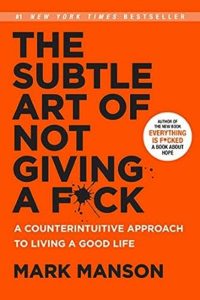 “The self-help industry is a multi-billion-dollar industry. It fills bookstores and conference rooms. It’s made media celebrities out of people and capitalized wildly off the growing self-consciousness of recent generations. And although it’s changed the lives of millions of people — mostly for the better, I assume — it still lacks a certain credibility with most. Many regard it as simple snake oil. Others laugh at the bizarre superstitions that get passed off as legitimate life advice. Many try self-help out but are left feeling disgruntled.
“The self-help industry is a multi-billion-dollar industry. It fills bookstores and conference rooms. It’s made media celebrities out of people and capitalized wildly off the growing self-consciousness of recent generations. And although it’s changed the lives of millions of people — mostly for the better, I assume — it still lacks a certain credibility with most. Many regard it as simple snake oil. Others laugh at the bizarre superstitions that get passed off as legitimate life advice. Many try self-help out but are left feeling disgruntled.
Clinical psychology doesn’t exactly have a stellar track record of personal change either, but at least when you lay down on the sofa, you know you’re dealing with a qualified expert who is telling you what to do based on 100+ years of empirical research.
With self-help, God only knows where half of these people come from. It’s a market-driven, rather than a peer-reviewed industry. The onus is on the reader to sift through the material and decide what’s credible and what’s not. And that’s not always easy to do.
The following are five major problems with the self-help industry today, and they’re unlikely to go away.
1. Self-help reinforces perceptions of inferiority and shame.
Two types of people get hooked on self-help material: those who feel something is fundamentally wrong with them and they are willing to try anything to make it better, and those people who think they’re already generally a good person, but they have some problems and blind spots and want to become great people.
Call these the “Bad-to-OK” people and the “OK-to-Great” people. Bad-to-OK people are in it because they believe that they’re fundamentally flawed and want to fix themselves. OK-to-Great people are in it because they think they are OK, but they want to become great.
Generally speaking, the OK-to-Great people do just that — they go from having an average and “OK” life and turn it into something really unique and great over the course of years.
The Bad-to-OK people improve little, if at all, even after years of “effort”. In some cases, they may even get worse.
OK, why?
Bad-to-OK people consistently fail because they possess a fundamental worldview that interprets everything they do, including self-help, to support their inferiority or lack of worthiness.
For example, an OK-to-Great person may read a book on becoming happy and think, “Oh, cool, there are a bunch of things in here that I’m not doing. I should try them out.”
A Bad-to-OK person will read the same book and say, “Wow, look at all of this stuff I’m not doing. I’m an even bigger loser than I initially thought.”
The fundamental difference is that Bad-to-OK lack self-acceptance that most people have. An OK-to-Great person will look at the string of bad choices and mistakes throughout their life and decide that they should make better choices and learn how to be a better person. A Bad-to-OK person will assume every choice they make is bad because they are a fundamentally flawed person and that the only way they can make good choices is by doing exactly what someone else says, word-for-word.
The irony here is that the pre-requisite for self-help to be effective is the one crucial thing that self-help cannot actually help: accept yourself as a good person who makes mistakes.
Sure, sit with your Chi, be still in the “now,” say your affirmations and journal until you’re blue in the face, but Bad-to-OK people will continue to perceive themselves as “Bad” and never reach the “OK” they’re desperately looking for. Because this inadequacy is their worldview, everything they do will only reinforce it further. At best, all they can hope for is to cover it up or suppress it.
2. Self-help is often yet another form of avoidance.
People consciously perceive their problems in all sorts of unique and creative ways: I don’t know when to kiss her; my family and I always fight; I feel tired and lazy all the time; I can’t stop eating sweets; my dog hates me; my ex-girlfriend burnt my house down; and on and on.
These all feel like “real” problems. But in almost every situation, the root of the problem is actually some deep form of anxiety/neuroticism or an unconscious feeling of shame or unworthiness.
We already saw how self-help usually proves ineffectual in dealing with the shame. Unfortunately, it often fails in handling the anxiety/neuroticism as well.
When someone with an inordinate amount of anxiety comes to self-help material, two things usually happen, and neither of them fix the problem.
They simply replace one neuroticism with another, slightly healthier neuroticism — think someone who goes from being an alcoholic and unable to hold a job, to meditating and doing yoga five hours a day and still unable to hold a job.
Or they use the self-help material as another form of avoidance. Dating advice is a classic example here — I don’t know how to ask out the person I like on a date, so I’ll read four books about it and feel like I did something. Suddenly reading the books feels far more important than actually asking the person out.
(This is also commonly known as analysis paralysis.)
3. Self-help marketing creates unrealistic expectations.
Although theoretically, I have no issue with the profit motive in the self-help industry, in practice it causes problems.
With the profit motive, the incentive is not on creating real change but creating the perception of real change.
 This can be done with placebos, teaching clients to suppress certain negative feelings or to pump their temporary emotional states. It can be done by placating anxious people with more information and neurotics with more relaxation techniques. These all create short-term sensations of accomplishment and improvement, but almost always dissipate within a few days or weeks.
This can be done with placebos, teaching clients to suppress certain negative feelings or to pump their temporary emotional states. It can be done by placating anxious people with more information and neurotics with more relaxation techniques. These all create short-term sensations of accomplishment and improvement, but almost always dissipate within a few days or weeks.
I’m sorry, but you’re not going to get over a lifetime of feeling inadequate or shame in a single weekend. You just aren’t. What will happen is you’ll feel better about that inadequacy and shame for a weekend and then it will come back again.
4. Self-help is (usually) not scientifically validated.
Here are the self-help practices which have been shown in scientific studies to have some validity: meditation or mindfulness, keeping a journal, stating what you’re grateful for each day, being charitable and giving to others.
Here’s where the science is hit and miss (it usually depends on how or why it is used): Neuro-Linguistic Programming, affirmations, hypnotherapy, getting in touch with your inner child.
Here’s what is complete bullshit: Feng shui, manifestations, tarot cards, telekinesis, psychics, crystals, power animals, tapping, the law of attraction, anything supernatural or woo woo.
The fact is that the majority of self-help information out there is either a placebo at best or complete bunk at worst.
Fortunately, in the past decade, many academics such as Brene Brown and Dan Gilbert are getting into the mix by writing self-help books based on scientific studies, rather than the usual trope of “I was cleaning out my closet when God spoke to me and I suddenly became enlightened and here’s my completely arbitrary and half-baked book on what you should and should not do with your life.”
5. Self-help is a contradiction.
The contradiction of self-help is that the first and most fundamental step to growth is to admit that you’re okay as you are and that you don’t necessarily need anyone else’s help. It’s the prime belief, and by its very definition, it’s something that can’t be given to you by someone else, it must be reached on your own.
The irony is that once you do accept that you don’t need someone else’s help or advice to become a good person, it’s only then that their advice truly becomes useful to you.
So in a way, self-help is most useful for people who don’t actually need self-help. It’s for the OK-to-Great people, not the Bad-to-OK people, although those are most of the people who get caught in its net and spend their money on it.
Self-improvement is quite literal in its meaning — it’s used to enhance oneself, not to replace it. If you’re looking to replace who you are with something else, then you will never succeed, and you’re more likely to get sucked up into the nonsense and pseudo-science and suppress your feelings of inadequacy rather than deal with them head-on.
In other cases, self-help allows people to transfer and project their feelings of inadequacy onto others, or live vicariously through a “guru” or someone else’s success. Again, it’s the perception of progress and not progress itself.
So what’s the point of all of this?
It’s this: figure it out yourself. That may sound like an obvious cop-out, but seriously, why would anyone else have the answers to your life but you?
You can take their experiences and ideas into consideration, but ultimately it’s their application to your life that matters.
None of this was supposed to be easy. Anyone who tells you otherwise is probably marketing something.
Be skeptical. Be selfish. And be ruthless. This is your life we’re talking about. Nobody else can be happy for you. If you find yourself having that expectation, well, then there’s your problem. And no one can help you except yourself.”
* * *
Thanks, Mark. Now, I’ll invite that AI expert to give their lowdown with my question, “What is the number one reason behind successful human ventures?”
ChatGPT: The number one reason behind successful human ventures can vary depending on the context, but one of the most common factors is “determination” or “persistence.” In many cases, success is achieved through a combination of factors, including hard work, dedication, adaptability, and resilience. Here are a few key factors that often contribute to the success of human ventures:
- Determination and Persistence: Many successful individuals and ventures face obstacles, setbacks, and failures along the way. What sets them apart is their determination to keep going despite challenges.
- Hard Work and Effort: Success often requires a significant amount of hard work and effort. Consistent and focused work toward a goal is a crucial factor in achieving success.
- Vision and Planning: Having a clear vision of what you want to achieve and creating a well-thought-out plan to reach your goals is essential for success.
- Adaptability: The ability to adapt to changing circumstances and learn from experiences is key. Successful ventures often evolve and adjust their strategies as needed.
- Skill and Expertise: Developing the necessary skills and expertise related to the venture is crucial. Continuous learning and improvement are common traits of successful individuals and organizations.
- Risk-taking and Innovation: Success often involves taking calculated risks and embracing innovation. Trying new things and thinking outside the box can lead to breakthroughs.
- Resilience: Resilience is the ability to bounce back from failures and setbacks. It’s a critical trait for overcoming challenges and continuing to pursue your goals.
- Networking and Collaboration: Building a strong network of supportive individuals and collaborating with others can open up opportunities and resources that contribute to success.
- Time Management and Discipline: Effective time management and discipline help in staying organized, meeting deadlines, and making the most of available resources.
- Passion and Motivation: Having a deep passion and strong motivation for what you’re doing can be a driving force that sustains your efforts even in difficult times.
It’s important to note that success can take many forms, and what works in one context may not work in another. Additionally, the relative importance of these factors may vary depending on the specific venture or goal. Different individuals and organizations may prioritize these factors differently based on their unique circumstances and objectives.
What are the common themes put forward in self-help programs?
ChatGPT: Self-help programs typically focus on personal development and empowerment, aiming to help individuals improve their lives, overcome obstacles, and achieve their goals. While the specific themes and advice offered can vary widely, there are several common themes and principles that are often put forward in self-help programs. Here are some of the most prevalent themes:
Positive Thinking and Mindset: Many self-help programs emphasize the power of positive thinking and maintaining a growth mindset. They encourage individuals to reframe negative thoughts and beliefs and cultivate a more optimistic outlook on life.
Goal Setting and Planning: Setting clear, achievable goals and creating a plan to reach them is a fundamental theme in self-help. This includes breaking down goals into smaller, actionable steps.
Self-Confidence and Self-Esteem: Building self-confidence and improving self-esteem are common self-help objectives. Programs often provide strategies to boost self-assurance and foster a healthy self-image.
Motivation and Inspiration: Self-help materials frequently offer motivation and inspiration to keep individuals committed to their personal development journey. This can include success stories, quotes, and strategies to stay motivated.
Time Management and Productivity: Effective time management and productivity techniques are often discussed to help people better organize their lives and accomplish more in less time.
Stress Management and Resilience: Coping with stress and building resilience to face life’s challenges is a prevalent theme. Self-help programs provide tools and strategies to manage stress and bounce back from setbacks.
Communication and Interpersonal Skills: Improving communication skills, building better relationships, and enhancing interpersonal interactions are often addressed in self-help materials.
Health and Wellness: Many self-help programs recognize the importance of physical and mental well-being. Topics can include exercise, nutrition, relaxation techniques, and mental health support.
Financial Success and Wealth Building: Some self-help programs focus on financial literacy, budgeting, investing, and strategies for building wealth.
Self-Discovery and Identity: Exploring one’s values, passions, and life purpose is a recurring theme. Self-help encourages individuals to better understand themselves and align their actions with their authentic selves.
Overcoming Obstacles and Adversity: Self-help often provides guidance on overcoming obstacles, including fear, procrastination, self-doubt, and setbacks. Strategies for resilience and problem-solving are emphasized.
Gratitude and Mindfulness: Practicing gratitude and mindfulness is promoted as a way to improve well-being and focus on the present moment.
Personal Responsibility and Accountability: Self-help programs stress the importance of taking responsibility for one’s actions and choices. They emphasize that individuals have the power to shape their own lives.
Continuous Learning and Self-Improvement: Lifelong learning and self-improvement are encouraged. Self-help materials often advocate for seeking knowledge and skills to grow and evolve.
Visualization and Affirmations: Techniques like visualization and positive affirmations are often promoted as tools to manifest goals and build a more positive self-image.
Happiness and Fulfillment: The pursuit of happiness and a fulfilling life is a central theme in self-help. This may involve reevaluating priorities, seeking purpose, and nurturing a sense of contentment.
It’s important to approach self-help programs critically and discerningly, as the effectiveness and applicability of the advice can vary widely. Different individuals may resonate with different themes and strategies, so it’s essential to choose resources and practices that align with your personal goals and values. Additionally, seeking professional guidance or therapy may be necessary for addressing specific mental health issues or complex life challenges.
Please define the principles of success in one paragraph.
ChatGPT: The principles of success can be summarized as the conscious and persistent pursuit of meaningful goals with a positive mindset, guided by clear vision and planning. Success is achieved through hard work, continuous learning, adaptability, and resilience in the face of obstacles, setbacks, and failures. It involves effective time management, self-discipline, and a focus on personal growth and self-improvement. Building strong relationships, both personal and professional, and maintaining a sense of purpose, passion, and motivation are also integral components of success, ultimately leading to a sense of fulfillment, achievement, and well-being in various aspects of life.
Please define the principles of success in one sentence.
ChatGPT: The principles of success involve unwavering dedication to meaningful goals, a positive and adaptable mindset, continuous learning, effective time management, resilience in the face of challenges, and the nurturing of purpose and relationships, ultimately leading to personal fulfillment and achievement.
Please define the principles of success in one word.
ChatGPT: Persistence.
* * *
Right. Persistence. Plus, passion and perseverance. Perseverance is kinda like persistence, but not really. Persist is to go after something. Persevere is stamina to keep it up. A cheetah and gazelle thing.
Which brings me to me. Dyingwords and my writing world. I started this venture in 2011, so I’ve been at it 12 years. My tagline is Provoking Thoughts in Life, Death, and Writing. I’ve never veered from it, and I won’t. Sometimes I post about high-profile deaths. Sometimes I post about life issues. Sometimes I post about writing craft. I try to find subjects I’m interested in, research them, and hope you get good from them, too.
In the past dozen years, I’ve outputted 21 for-sale book publications, hundreds of blog posts, over a thousand paid commercial web content pieces, nearly three million words checked on Grammarly, and now I’m involved in producing content for the film industry. I’ve had 130K e-book downloads on five retail platforms in 106 different countries, been #1 in my Amazon categories a bunch of times, have around 250K yearly visits to my website, as well as 2,200 regular mailing list followers (who I dearly appreciate) and north of 10K on Twitter or whatever Musk calls X today.
I’m happy with this success. The numbers success. Moreso the feedback and the peer recognition success. I attribute it to motivating myself through positive reader support as well as psychological affirmations and quotations. Here are a few of the cut & pastes stuck around my studio workstation:
“Contempt for failure.”
“Did I show up dressed today?”
“Memento Mori” ~Marcus Aurelius
“Ya gotta wanna.” ~Jimmy Pattison
“To understand is to know what to do.”
“Focus. Cut the noise. Double the results.”
“Invest the Time. Do the work. Tell the truth.”
“This, too, shall pass away.” ~Abraham Lincoln
“Overcome resistance. Trust the muse.” ~Stephen King
“Three common traits of winners. Desire. Determination. Confidence.”
“You don’t really understand something until you can build it.” ~Richard Feynman
“If you do what everyone else is doing, you shouldn’t be surprised to get the same results. Different outcomes come from doing things differently.”
“The long game wins come from repeatedly doing hard things today that make tomorrow easier.”
“Let us prepare our minds as if we’d come to the very end of life…the one who puts the finishing touches on their life each day is never short of time.” ~Seneca
“Compound interest is the most powerful force in the universe. It’s the dogged, incremental, constant progress over a very long time.” ~Albert Einstein
“Failure seems to be nature’s plan for preparing us for great responsibilities. If everything we attempted in life were achieved with a minimum of effort and came out exactly as planned, how little we would learn—and how boring life would be! And how arrogant we would become if we succeeded at everything we attempted. Failure allows us to develop the essential quality of humility. It is not easy—when you are the person experiencing failure—to accept it philosophically, serene in the knowledge that this is one of life’s great learning experiences. But it is. Nature’s ways are not always easily understood, but they are repetitive and therefore predictable. You can be absolutely certain that when you feel you are being most unfairly tested, you are being prepared for great achievement.”” ~Napoleon Hill
“One of the biggest keys to success at anything is believing you can figure it out as you go along. A lot of people won’t start until they figure it out. And because most hard things can’t be figured out in advance, they never start.” ~Richard Feynman
“There are those who watch things happen, those who wonder what happened, and those who make things happen. Strive to be one of those who make things happen. If you show others what you can do, they will respect you far more than if you had simply told them what you’d done. Anyone can quarrel with words, but actions speak for themselves.” ~Tommy Lasorda
Impossible is just a big word thrown around by small men who find it easier to live in a world they’ve been given than to explore the power they have to change it. Impossible is not a fact. It’s an opinion. Impossible is not a declaration. It’s a dare. Impossible is potential. Impossible is temporary. Impossible is nothing.” ~Muhammad Ali
“I believe that life operates at two levels. The higher level if the muse level—the level of your calling. The lower level is our material plane. On that plane is the force I call Resistance with a capital R. That’s there to stop us from reaching the higher level. The purpose of discipline is that discipline is what takes you to that higher level. That’s why you have to have it—discipline. You can’t wish your way to it. You can’t chant your way there. You can’t—that book The Secret—vibe or manifest your way there. The law of attraction is bullshit. It’s not going to get you there. The only way you get there is through hard and disciplined work. You got to punch your ticket and pay the price.” ~Steven Pressfield
“Doing your best isn’t about the result. You know you did your best before you show up. Over the long term, the long game, the average person who constantly puts themselves in a good position beats the genius who puts themselves in a poor position. And the best way to put yourself in a good position is with good preparation.”
“Any dominating idea, plan, or purpose held in the conscious mind through constant repetitive thought and emotionalized by the subconscious and acted upon by whatever natural and logical means may be available.” ~Napoleon Hill
“Ninety percent of success can be boiled down to consistently doing the obvious thing for an uncommonly long period of time without convincing yourself that you’re smarter than you are.”
“The Formula: The courage to start. The discipline to focus. The confidence to figure it out. The patience to know progress is not always visible. The persistence to keep going, even on the bad days.”
“Success is that place in the road where preparation and opportunity meet, but too few people recognize it because too often it comes disguised as hard work.”
“If you’re the smartest person in the room, you’re in the wrong room.” ~Jordan Peterson
“Anyone can make the simple complicated. Creativity is making the complicated simple.”
“Pro golfers have learned to miss their shots by narrower margins than amateurs.”
“Avoiding stupidity is easier than seeking brilliance.” ~Charlie Munger
“Being successful is easy. Staying successful is hard.”
“An ounce of action is worth a ton of theory.”
* * *
Failing to Fail aka How to Succeed. It’s the mindset towards a goal. A want. A need or a must. To succeed and acquire, not fail, you require the power of passion, persistence, and perseverance.










